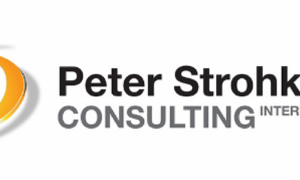Modern technology has seen impressive advances over the last decade, with the internet at the forefront of each and every single one of these impressive developments. Smart phones and tablet devices are now a key part of everyday life so much so that we use them to do our banking and even make payments. You can even pay for items and services using digital currency, namely the Bitcoin. Yes, technology is most certainly king and for that reason, if you want to succeed in business, you need to fully embrace it and get friendly with it.
It doesn’t matter how big or small your company is, the simple fact of the matter is, if you do business today, you need to play by today’s tech rules. You need a website for your business. And not just the plain old template website with just your number and address on it. It will need to work for you and speak for you. If your website is dated, bland, neglected or poorly designed, it could be costing you thousands in lost potential revenue every single month. That’s quite a bit of cash.
Is your business suffering and you’re not quite sure why? Maybe, just maybe, your website is sabotaging your efforts.
Here’s a look at six ways in which your website could potentially be costing your new business dearly:
1. Your site does NOT have clear calls to action (CTAs) – One of the best ways of actually getting what you want is to ask for it. That is exactly what a “call to action” is. It is your job to encourage, or even to direct your customers towards what it is that you would like them to do. Once they are on your page and have had a look around…what do you want them to do? Tell them, make it easy for them to see, click, act.
Do you want them to sign up for a free trial? If so, a simple hyperlink linking to the “free trial” page in a visible section of the site will be enough. Insert the text ‘Click here for your free trial” and that’s it. You have told them what to do. Do you want them to browse your service or products? If so, ‘Click here to browse our full range of products/services’ etc. Place these clickable links strategically throughout your website whilst making sure their user experience (UX) is not affected.
Carefully placed links with simple calls to action will need to be available for the full sales cycle. Maybe a visitor won’t buy today but they might sign up to your newsletter or they might start following you on Twitter and return to buy later. Keep the customer in mind and make it easy for them to act.
2. Your layout is lame – On average, a new visitor to a web page will only spend six seconds evaluating whether to stay on your site or to click the back button to go somewhere else. The layout of your website is arguably one of the most important factors to consider when creating a web page for your business. Although there are a number of “create your own” websites out there that cost little to nothing at all, it is advisable to hire professional web designers where possible as they will be able to create a bespoke platform for you that will actually work for your business.
You need to define your message and think about what you want each page to say. Then explore ways of saying it using simple, concise yet interesting copy to relay that vision to your customers. You can always go into more depth in the blog section of your site. Yes, you need one!
Depending on the industry you are in, potential customers will be visiting your website to browse your products and services and determine whether they are of interest. Tell them the short version of your story and show them what you do. Make it easy for them to find things quickly and ensure each page is well balanced. A good mix of imagery and text tends to be the winning combination.
3. Your design is vintage, in the wrong way – A great website design will tell consumers that your business is professional, innovative, trustworthy and appealing to work with. Design and feel can either boost your reputation or turn potential consumers away.
You might think you are saving money by doing it yourself. In fact, you could actually be losing potential customers and indeed money by not investing enough resources to get the design right from the start. 41% of small business owners who are unhappy with their current website say design/aesthetic is one of their main problems. Think of a website as your business card. This is what people use to get an idea of who you are, what you do, how they can get in touch with you. Invest from the start and make sure your website offers customers a great online experience that flows naturally into a sale.
4. Lack of a social network– Social networking is now a part of everyday life and the sooner you accept it and make it part of your business life, the better. Should you still be lacking social media pages for your business, you need to go and create some right now. Social networks are the ideal promotional mediums as it’s a great pool of free or very cheap marketing and advertising avenues. Millions upon millions of people use these pages and by cleverly utilising their impressive reach, you can not only drum up new business but strengthen and boost the loyalty of your existing customer base.
Once you have the key social media accounts created (think Facebook, Twitter, Linkedin, Pinterest, Instagram) you need to ensure you provide links to each of them from your website. Linking to social networking pages is ideal because it allows you to keep in touch with customers and keep them up to date with what’s going on. You might be having a sale. People love a good sale, right? Get promoting this sale through social networking sites and you have a direct line of communication to people who are already interested in what you’re selling. Half the work is already done in a click or two.
Friends, fans and followers can see the amazing deals you’re offering and will likely take advantage of them. You have just brought everything to them rather than waiting for them to find it. CTAs (calls to action) are just as important on social media and a simple text such as “Stay Informed by liking us on Facebook” with a direct link to your Facebook page is all that is required, and it’s proven to be extremely effective across the world for business big and small.
5. Your site is not mobile-friendly – As mentioned previously, smartphones and tablet devices are now extremely common, with close to 50% of all US citizens actually owning at least one of these devices. More and more people are using these devices to browse the web to the detriment of laptops or computers. It is estimated that by 2017, up to 90% of content will be read from mobile devices.
If your website isn’t mobile friendly then you need to rectify this as soon as possible since you could be losing out on a lot of customers. Websites that aren’t responsive (i.e mobile/tablet friendly) show up incredibly small on the screens of smartphones thus forcing the user to enlarge text, scroll left, right and centre and turn the experience into a frustrating chore. With today’s tech savvy and time starved user always on the look out for the best and the fastest, they WILL move away from your site and onto a competitor’s optimised page.
Responsive websites recognize when a user is browsing via a smartphone and will rearrange the layout and the text in the perfect order and size for their screen. It’s a small detail but it is vital. Get mobile friendly from the start and your mobile using customers will be friendly to you.
6. Contact details are hard to find – Several studies and expert research have found that including your contact information on every single page of your website is the most effective way of maximizing sales.
Many businesses make the mistake of placing their contact information solely on their ‘contact us’ page or sometimes not at all. Visitors don’t want to navigate through several different pages just to find a telephone number or an email address. They want to find what they’re looking for as quickly as possible. Just by listing your business phone number, operating hours and email address at the bottom of every page will make the customer experience that much more pleasant.
For further benefit make sure to include links to your social media pages with your contact information. The easier you are to get hold of, the better. It’s a win-win situation, the customer gets quick access to information and you gain new leads and extra sales.

The Millionaire Marketer; Speaker, Trainer, Consultant and Multiple Best Selling Author on how to create wealth through books and social marketing
www.MotivationalSpeakersAustralia.com/cydney-osullivan
www.CydneyOSullivan.com
www.Facebook.com/cydneyosullivanauthor



